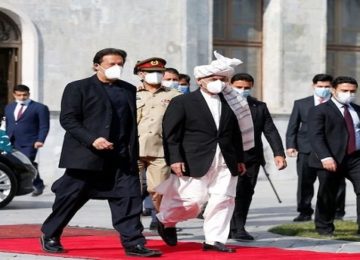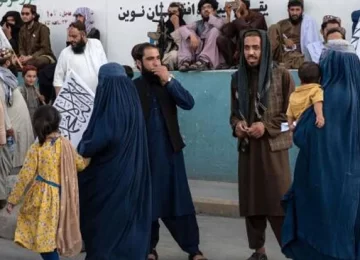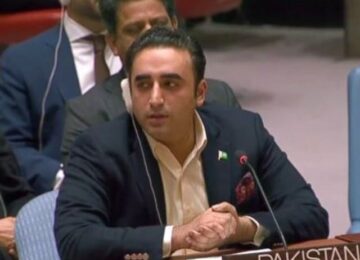January 31, 2019.
Afghanistan has the unique opportunity to function as the irreplaceably vital component of the Golden Ring of Multipolar Great Powers after the US’ possible withdrawal by the end of 2020, but it can only achieve its geostrategic destiny if its many regional partners have a shared view of this future vision.
Failure After Failure After Failure
The very real possibility of an American withdrawal from Afghanistan by the end of 2020 has the chance to completely change the regional geostrategic paradigm to multipolarity’s favor, thus representing a game-changer of unparalleled historic importance. The US’ War on Afghanistan was motivated by many factors, not least of which was pure geopolitics in seeking to establish a transregional base at the crossroads of Central, South, and West Asia from which America could then export its hard and soft influence through various means, be it Color Revolutions, terrorist-driven Unconventional Wars, or their combined application via Hybrid Wars. The US failed each of the three times that it tried to do this in attempting to catalyze a “Central Asian Spring” in 2005 & 2010 and then trying to use Daesh against the neighboring countries from 2015 onwards.
America’s Retreat From The Taliban
Being unsuccessful at exploiting Afghanistan’s position as a springboard for spreading destabilization throughout this transregional space, the US’ only reasonable recourse is to try to clinch a pragmatic deal with the Taliban whereby its companies might still be allowed to extract natural resources from the country in exchange for a full-fledged withdrawal. As for the Taliban, their possible “compromise” might reportedly be that they agree to respect the writ of the Kabul authorities and renounce their previous wishes to establish a monopoly on power in the future. Provided that the US truly does withdraw from Afghanistan and the Taliban keeps its word to operate within existing state structures (which is still iffy because nothing’s been confirmed and anything can happen between now and the end of 2020), then the country would truly be opening a new page in its history.
The US will probably try to implement some “backup plan” or another such as replacing its troops with mercenaries, positioning “rapid response” special forces in a neighboring country such as increasingly American-friendly Uzbekistan, and/or retaining the right to launch cruise missile strikes against the suspected bases of international terrorist groups that the Taliban either doesn’t destroy (per its anti-terrorist responsibilities stipulated by a possible peace pact with the US) or is unable to. That said, America’s billionaire president seems to have realized that it’s about time to cut his country’s exorbitant costs from this conflict and pull out of this quagmire so that the government’s resources can be put to more effective use elsewhere, especially ahead of what’s bound to be a heated re-election campaign next year. Accordingly, the US might really be licking its wounds and be serious about withdrawing for good.
Ensuring Stability Through SCO Connectivity
Should that be the case and the Taliban also proves willing to pragmatically cooperate with Kabul, it would be incumbent on the SCO to swoop in and help stabilize Afghanistan with all of the socio-economic assistance that it so desperately needs during this sensitive transition. Out of the many countries that comprise this Eurasian organization, the three most directly influential ones in this context are Pakistan, Russia, and Iran, each of which has high-level national security interests related to Afghanistan’s stability. None of them want the country to turn into a terrorist hotbed like Iraq did shortly after the American withdrawal from that conflict theater, though they also don’t want to be caught up in “mission creep” by directly addressing these threats themselves. Therefore, they’ll probably try to “balance” between cooperating with the Taliban and Kabul to this end.
So long as Afghanistan doesn’t slide back into an intensified period of 1990s-like civil war, they won’t have to worry much about terrorist or other asymmetrical threats like “Weapons of Mass Migration” spreading across their borders. This could provide ample space for building the RuPak Railaway between Russia and Pakistan via Central Asia and Afghanistan, as well as extending Iran’s economic influence into the neighboring state through the Indian-built Chabahar Corridor that forms the eastern branch of the North-South Transport Corridor (NSTC). Speaking of Pakistan’s neighbor, India doesn’t have any legitimate interests in Afghanistan other than trying to strategically encircle its rival and counter China’s Silk Road influence there, but it’s theoretically possible that both Asian Great Powers’ interests could converge instead of compete with one another. That’s the ideal scenario, though it’s far from certain, but the point to focus on is the benefit of connectivity.
The Pakistani-Russian-Iranian Vanguard
Afghanistan’s location provides it with the unique opportunity to function as the irreplaceably vital component of the Golden Ring of Multipolar Great Powers because its continued stabilization guarantees the success of this ambitious integrational vision between Russia, China, Pakistan, Iran, Turkey, and the Central Asian Republics (as well as India if it manages to make peaceful infrastructural inroads in this transregional space and doesn’t “fully defect” to the American camp). For that to happen, however, all of its people need to become stakeholders in this vision, which can only happen as result of political reforms (potentially even as radical as “decentralization”) and socio-economic progress, the latter of which can be achieved through the connectivity projects mentioned earlier (RuPak Railway, Chabahar Corridor, Silk Road). Preceding this, Afghanistan’s security must be ensured, and therein lays the leading role that Pakistan, Russia, and Iran must play.
As the vanguards of Afghanistan’s external security by virtue of their adjacent location to it (which is indirect in the case of Russia because of Tajikistan’s membership in the Moscow-led CSTO mutual defense alliance), each of these Eurasian Great Powers has the right to privileged partnerships with Kabul and the Taliban, as do Uzbekistan and Turkmenistan to a lesser extent. China already works very closely with both de-facto governing parties but it’s traditionally shied away from any serious security cooperation with either of them given the risks of “mission creep” in this conflict-prone country. Therefore, it’s incumbent on the Russian-Pakistani Strategic Partnership to include Iran within its ranks as a comprehensive multilateral partner in Afghanistan, which can not only lead to these three implementing external security solutions for the country but also give Tehran a reason to “rebalance” its strategic focus eastward in the face of newfound challenges in the “Mashriq”.
Concluding Thoughts
The very realistic prospect of the US withdrawing from Afghanistan by the end of 2020 would be a paradigm-changing event if it ever occurs, opening up the opportunity to strengthen multipolarity in the geostrategic heartland of Eurasia, though only if peace and security in the war-torn country can be assured in the aftermath of America’s departure. For this to happen, Russia and Pakistan must first take the lead in externally securing Afghanistan’s northern and southern peripheries prior to incorporating Iran into a regional security matrix that could then be used as the basis upon which socio-economic development can be pursued. While China is Afghanistan’s natural economic partner, India isn’t, though it’ll ultimately be the sovereign choice of the country’s two de-facto governing factions whether to include it into this developing multipolar framework. Nevertheless, it shouldn’t be forgotten that Russia and Pakistan will be the driving forces in post-US Afghanistan, and their RuPak Railway proposal represents its most promising post-war project.








